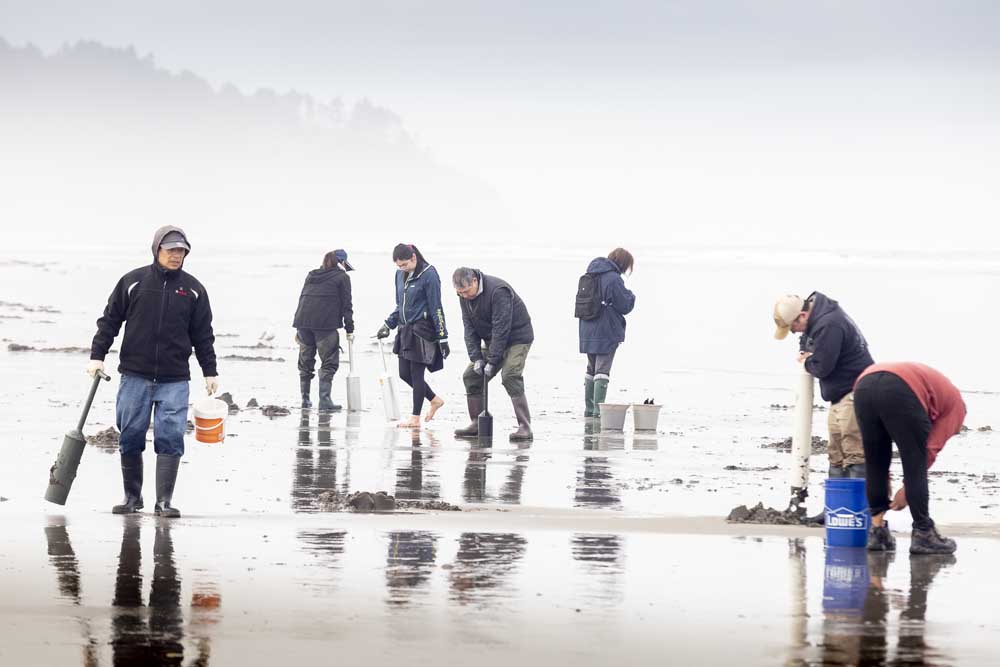Local clams within safety limits, but no season planned yet
Published 9:30 am Thursday, August 31, 2023

- Local beaches were busy this past April with thousands of clam diggers seeking 20-clam limits. Clamming had been closed nearly half a year because of elevated levels of a marine toxin.
PACIFIC COUNTY — Domoic acid toxin in Pacific County razor clams was at safe levels in samples tested Aug. 28.
Trending
A naturally occurring substance produced by several species of microscopic marine diatoms, domoic acid sometimes delays or interrupts recreational clam seasons. Harvests aren’t allowed if tests find more than 20 parts per million in clam meat on any portion of a beach, or if testing suggests domoic levels could be on a rapid upswing.
The latest samples gathered at three sites on the Long Beach Peninsula found levels of 6, 7 and 10 ppm, about what they have been since this spring when clamming was most recently allowed.
Levels are somewhat higher on the Twin Harbors beach between Tokeland and Westport that spans north Pacific and south Grays Harbor counties, but still within limits defined as safe. Testing by the Washington Department of Health found levels of 9, 12 and 14 ppm. The highest level of 14 was consistent throughout August. It is higher than DOH typically likes, since there is a smaller safety margin before the 20 ppm safety threshold.
Trending
Copalis Beach — the Ocean Shores area north of the mouth of Grays Harbor — spiked from 5 ppm on July 21 to 20 ppm on Aug. 3, but have since ratcheted down to 8, 10 and 13 ppm on Aug. 28. The Mocrocks Beach — just south of the Quinault Indian Reservation — saw the outer coast’s sharpest increase in domoic, from 4 ppm July to 30 ppm Aug. 3. Levels of 10, 14 and 15 ppm were found Aug. 28.
In 2022, clamming was initially supposed to start Sept. 22. Domoic levels on Long Beach were below 20 ppm but were deemed too close to the 20 ppm threshold. Digging was allowed Sept. 28-30, but the toxin began a rapid rise in late-October and remained too high for digging to resume until the Long Beach Razor Clam Festival in April.
Domoic acid is often associated with abnormally warm seawater. Throughout most of this summer, a large zone of the North Pacific experienced a marine heat wave that encroached on the Washington coastline. However, as of Aug. 29, the water closest to the coast showed distinct signs of breaking up and cooling down — a positive indication that we may avoid a diatom bloom that could produce excess domoic acid.
The health department requires two test samples taken at least 10 days apart (depending on tides and weather) and must fall under the health guideline level before a beach can open for digging. The next tests should occur around Sept. 7. Based on past practices, if those samples show stable or declining levels of the toxin in clam meat, the start of the 2023-24 clam season will be announced.
As of 9 a.m. Sept. 5, WDFW had not responded to specific questions about its plans for the season.









